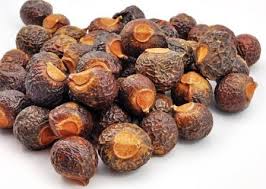Halim Seedsus Oil vs Other Natural Oils: Which is Better?
Halim Seeds Oil vs. Other Natural Oils: Which One Deserves a Place in Your Routine? 🛢️🌾
In the world of natural wellness and Ayurvedic beauty, oils play a central role in promoting healing, nourishment, and balance. Whether it’s for hair care, skin therapy, or internal rejuvenation, natural oils like coconut, almond, castor, and sesame have long been praised for their therapeutic properties. But in recent years, Halim Seeds Oil—extracted from Garden Cress Seeds (Lepidium sativum)—has emerged as a lesser-known yet powerful contender.
Ayurveda has celebrated Halim seeds for their ability to purify blood, balance hormones, and strengthen bodily tissues (Dhatus). When cold-pressed into oil, these benefits are amplified, offering a unique nutritional and medicinal profile. But how does Halim oil compare with traditional heavyweights like coconut, castor, or sesame?
Let’s dive into a detailed comparison and find out which oil might be the better fit for your hair, skin, and wellness needs. 🌿✨
🌾 Long Description (~1500 Words)
🔍 What is Halim Seeds Oil?
Halim seeds oil, also known as Asaliya oil, is derived from cold-pressed Garden Cress Seeds. This reddish-brown oil is rich in iron, omega-3 fatty acids, antioxidants, and flavonoids. Traditionally used in Ayurveda for its Rasayana (rejuvenating) properties, this oil targets both internal and external healing.
💡 Benefits of Halim Seeds Oil
🔹 1. Promotes Hair Growth
High in iron and folic acid, which helps increase hemoglobin and improve scalp blood flow.
Strengthens follicles from the root and reduces hair thinning caused by nutritional deficiencies.
🔹 2. Balances Hormones Naturally
Known to support Shukra Dhatu (reproductive health).
Helps in managing hair fall and skin breakouts caused by PCOS, thyroid, or stress-related imbalances.
🔹 3. Improves Skin Elasticity
Packed with vitamin A, C, and E, it hydrates skin deeply and restores glow.
Ideal for dry, dull, and aging skin.
🔹 4. Anti-inflammatory & Antioxidant
Halim oil helps reduce inflammation, rashes, and scalp irritation.
Prevents oxidative stress and slows down skin aging.
🛢️ Comparison: Halim Seeds Oil vs Other Popular Natural Oils
Let’s now compare Halim seeds oil with other widely used natural oils based on their Ayurvedic properties, nutrients, and benefits.
🥥 1. Halim Seeds Oil vs Coconut Oil
Feature Halim Seeds Oil Coconut Oil
Dosha Suitability Balances Vata & Pitta Primarily for Pitta & Kapha
Nutrients Iron, Omega-3, Vitamin C & A Lauric acid, Vitamin E, Antimicrobial agents
Hair Benefits Strengthens roots, stops hair fall Reduces protein loss, adds shine
Skin Benefits Improves elasticity, treats pigmentation Moisturizes, heals wounds
Texture & Absorption Light, non-greasy Thick, requires more time to absorb
Ayurvedic View Rasayana (deep tissue nourishment) Snehana (oleation, calming)
Verdict:
Choose Halim oil for deep tissue repair and hair growth.
Choose coconut oil for scalp cooling and fungal protection.
🌰 2. Halim Seeds Oil vs Almond Oil
Feature Halim Seeds Oil Almond Oil
Dosha Balance Vata-Pitta balancing Best for Vata imbalance
Key Nutrients Iron, Omega-3, Antioxidants Vitamin E, Magnesium, Zinc
Hair Health Revitalizes scalp, stops hormonal hair fall Softens and strengthens dry hair
Skin Benefits Fades scars and improves elasticity Brightens skin, reduces dark circles
Absorption Rate Moderate Fast-absorbing
Ayurvedic Action Rasayana + Balya (strength-giving) Brimhana (nourishing, tissue-building)
Verdict:
Choose Halim oil for hormonal issues and internal detox.
Choose almond oil for nourishing baby-soft skin and daily moisturizing.
🌿 3. Halim Seeds Oil vs Castor Oil
Feature Halim Seeds Oil Castor Oil
Dosha Effect Pitta-Vata pacifying Kapha-Vata balancing
Texture Light to moderate Very thick and sticky
Key Actions Promotes hair & skin renewal Promotes hair growth & fights infections
Laxative Use Not suitable for laxative use Yes – commonly used in detox & cleansing
Ayurvedic Application Rejuvenation, Shukra support Detoxification, deep healing
Verdict:
Choose Halim oil if you want multi-purpose external + internal benefits.
Choose castor oil for scalp infections or constipation relief.
🔶 Unique Advantages of Halim Seeds Oil
✔ Multi-use (Hair, Skin, Hormonal Health)
✔ Balances both Pitta and Vata doshas
✔ Ideal for women’s wellness – PCOS, hair fall, skin dullness
✔ Non-comedogenic – doesn’t clog pores
✔ Supports liver detox and Rakta Dhatu (blood purification)
✔ Light texture – suitable for daily application
🧴 How to Use Halim Seeds Oil in Your Routine
✅ For Hair
Warm 2–3 tsp of Halim oil and massage it into the scalp.
Leave overnight or for 1–2 hours. Wash with herbal shampoo.
✔ Frequency: 2–3 times a week.
✅ For Skin
Apply 4–5 drops to clean skin at night.
Use with aloe vera gel or rose water for better absorption.
✔ Helps with dryness, acne marks, and pigmentation.
✅ Internal (As Advised by Ayurveda Practitioner)
½ tsp with warm milk on an empty stomach.
Avoid during pregnancy unless advised by a Vaidya.
🕉️ Ayurvedic Expert Tips
🔸 Use Halim oil with Brahmi or Amla powder for boosted scalp rejuvenation.
🔸 Combine Abhyanga (oil massage) with Halim oil during high-stress weeks.
🔸 Ideal for people who experience hair fall due to iron deficiency or stress.
🧾 Final Take: Which Oil Wins?
While each natural oil has its own unique benefits, Halim seeds oil offers a rare combination of nutritional support, hormonal balance, and tissue rejuvenation that sets it apart from others. Whether you’re facing chronic hair fall, hormonal acne, dull skin, or internal weakness, Halim oil can be a multi-purpose Ayurvedic powerhouse.













